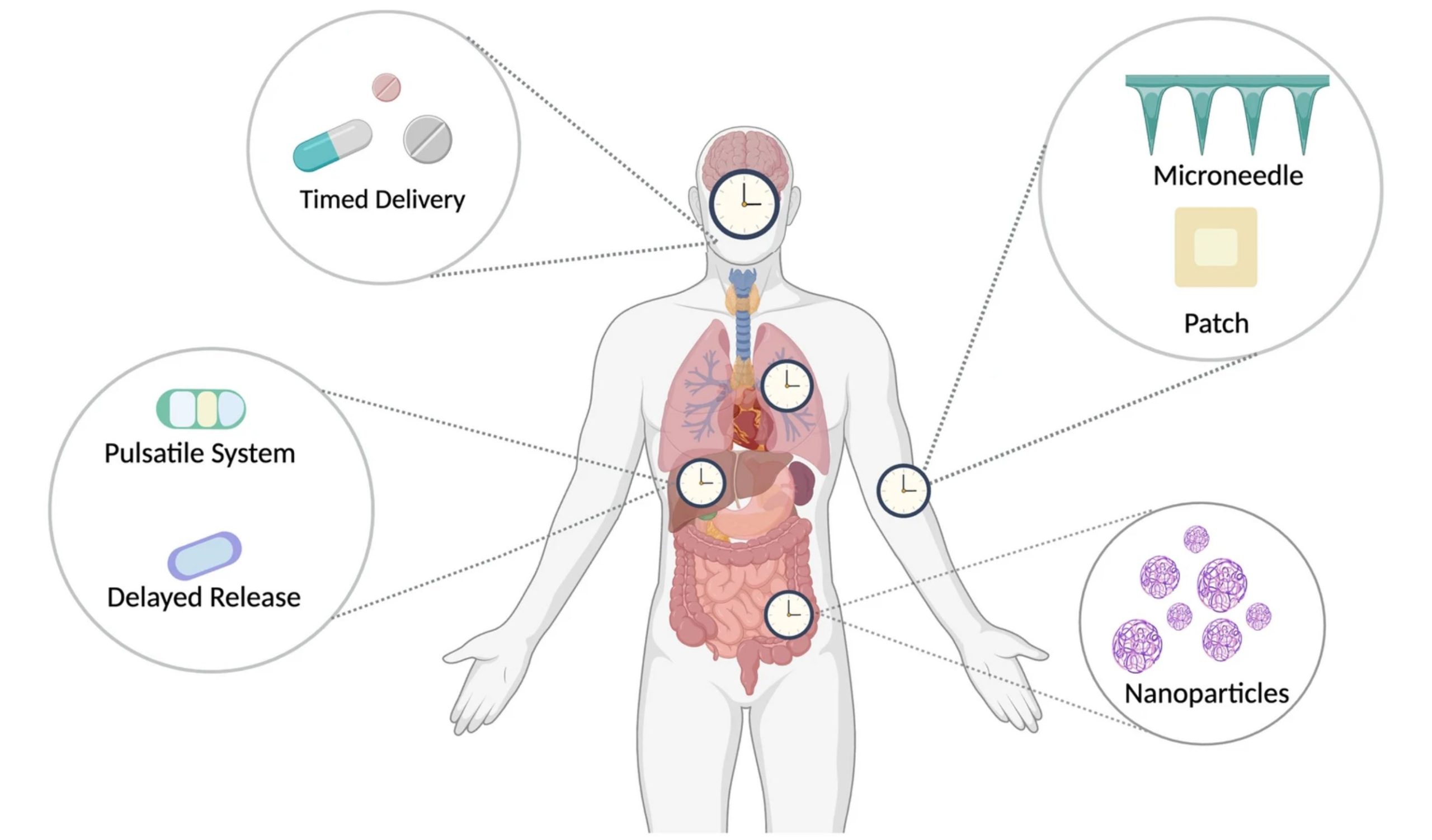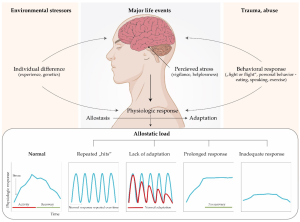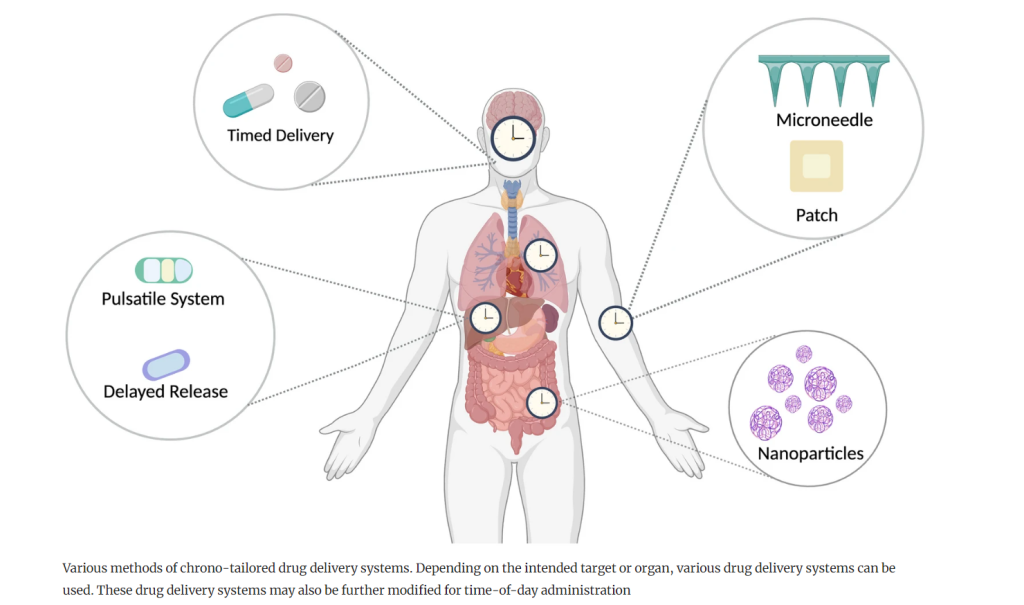Chrono-tailored drug delivery systems: recent advances and future directions

Abstract
Circadian rhythms influence a range of biological processes within the body, with the central clock or suprachiasmatic nucleus (SCN) in the brain synchronising peripheral clocks around the body. These clocks are regulated by external cues, the most influential being the light/dark cycle, in order to synchronise with the external day. Chrono-tailored or circadian drug delivery systems (DDS) aim to optimise drug delivery by releasing drugs at specific times of day to align with circadian rhythms within the body. Although this approach is still relatively new, it has the potential to enhance drug efficacy, minimise side effects, and improve patient compliance. Chrono-tailored DDS have been explored and implemented in various conditions, including asthma, hypertension, and cancer. This review aims to introduce the biology of circadian rhythms and provide an overview of the current research on chrono-tailored DDS, with a particular focus on immunological applications and vaccination. Finally, we draw on some of the key challenges which need to be overcome for chrono-tailored DDS before they can be translated to more widespread use in clinical practice.
Introduction
The circadian clock is an internal body or cellular clock with a rhythmic period of 24 h. The central pacemaker, the suprachiasmatic nucleus (SCN), is the dominant oscillator receiving light/dark signals from the eye, and it controls peripheral clocks throughout the body via various signals (Table 1). These clocks or oscillators exist within cells and tissues and are all driven by the same molecular mechanisms as that of the SCN. Almost half the protein-coding portion of the human genome is expressed with 24-h rhythmicity indicating how tightly linked circadian rhythms are with all metabolic, biochemical, and physiological processes throughout the body [1]. The circadian clock tightly regulates various cellular processes including cellular metabolism and the immune response and has a significant influence on the response to various drugs and therapeutics.

The clock has wide-ranging control on drug targets and drug metabolising processes, thus optimising drug delivery based on the body’s circadian rhythm has become a point of interest in recent years. Various drug delivery systems currently exist which can be modified for circadian delivery as seen in Fig. 1. These include pulsatile systems, timed and delayed delivery, and transdermal delivery. New technologies such as nanoparticles and microneedles, which are currently under development, similarly show promise to be used in a chronotherapeutic way.
Fig. 1*: Various methods of chrono-tailored drug delivery systems. Depending on the intended target or organ, various drug delivery systems can be used. These drug delivery systems may also be further modified for time-of-day administration
Herein, we first introduce the field of circadian biology and the studies that justify the development of chrono-tailored drug delivery systems (DDS). Following this, we summarise key developments and prospects of chrono-tailored DDS. Finally, we discuss the potential of chrono-tailored vaccination approaches. Overall, we aim to give an overview of the field of drug delivery systems concerning chronobiology and to discuss the prospects and associated challenges within the field.
Download the full article as PDF here: Chrono-tailored drug delivery systems
or read it here
Butler, C.T., Rodgers, A.M., Curtis, A.M. et al. Chrono-tailored drug delivery systems: recent advances and future directions. Drug Deliv. and Transl. Res. (2024). https://doi.org/10.1007/s13346-024-01539-4
Read also our article Antihypertensives’ Rock around the Clock here:



